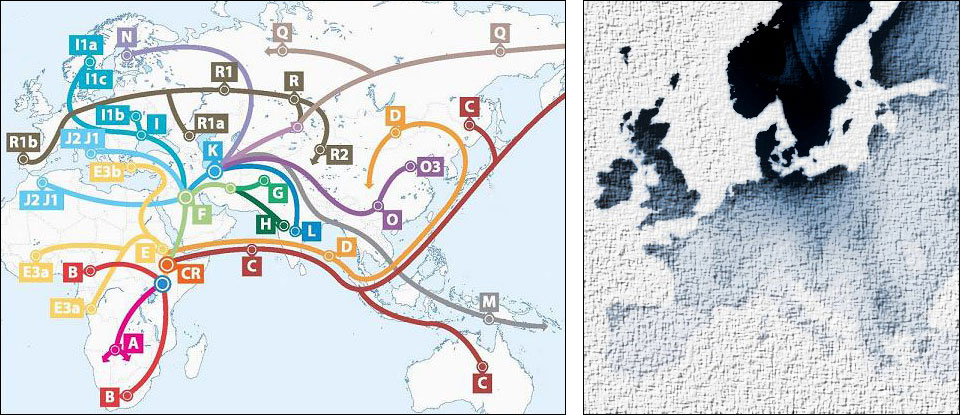
DNA in the Y-chromosome is passed solely along the paternal line, from father to son. In my case, that's the Mulder line traced back to Gerrit Jansen Mulder in Gelderland, Netherlands.
In this paternal line, I am part of Haplogroup I1 (previously known as I1a). Haplogroup I originated in the Middle East or in Southern Europe. During the last ice age when much of Europe was covered by glaciers, people took refuge along the Mediterranean. After that, members of the I2a branch spread north into eastern Europe and west along the Mediterranean. I1 originated in northern France as they trekked northward to Scandinavia. Some spread to western Europe from Scandinavia through populations like the Vikings.
Today I1 is found most frequently within VIking/Scandinavian populations in northwest Europe and has since spread down into central and eastern Europe, where it is found at low frequencies.
Maps of I1 historical progression and current distribution:

Read more about I1 at Wikipedia.
Mitochondrial DNA is passed solely along the maternal line, from mother to daughter. In my case, that goes back to Harmtjen Hassink in Bentheim, Germany.
In this maternal line, I am part of Haplogroup K. Haplogroup K is found through Europe, and contains multiple closely related lineages indicating a recent population expansion. The origin of haplogroup K dates to approximately 16,000 years ago, and it has been suggested that individuals with this haplogroup took part in the pre-Neolithic expansion following the Last Glacial Maximum.
Overall, mtDNA Haplogroup K is found in about 6% of the population of Europe and the Near East, but it is more common in certain of these populations. Approximately 16% of the Druze of Syria, Lebanon, Israel, and Jordan belong to haplogroup K. It was also found in a significant group of Palestinian Arabs. K reaches a level of 17% in Kurdistan. Haplogroup K was found in the remains of three individuals from the Pre-Pottery Neolithic B site of Tell Ramad, Syria, dating from c. 6000 BC. Haplogroup K has also been found in skeletons of early farmers in Central Europe of around 5500-5300 BC.
While some members of the group headed north to Scandinavia or South to North Africa, most women in this group crossed the Caucasus Mountains in southern Russia and moved on t the steppes of the Black Sea. The Haplogroup K is currently shared by over 3,000,000 people.
Maps of K historical progression and current distribution:

Read more about K at Wikipedia.
My DNA testing was done by Family Tree DNA.